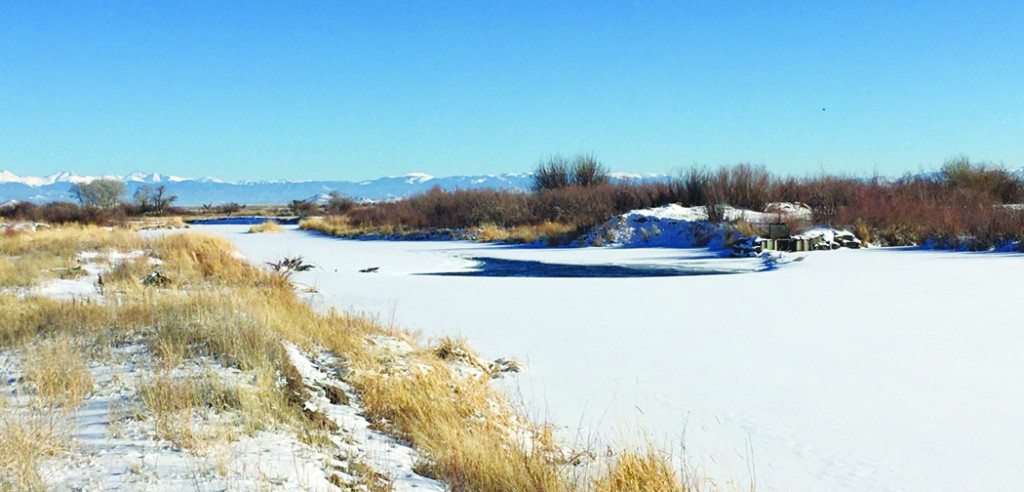RGWCD Board of Directors approve Fourth Amended Plan of Water Management

ALAMOSA – The Board of Directors of the Rio Grande Water Conservation District (RGWCD) has voted unanimously to approve Subdistrict No. One’s Fourth Amended Plan of Water Management (POWM). Their vote paves the way to send the amended plan to Kevin Rein, Colorado’s State Engineer and the chief water guy in the state. Should Rein approve the plan, it will be sent back to the Subdistrict No. One’s Board of Managers for final approval before being put in place
Water policy and related procedures are nuanced and complicated, especially for those whose legacies, livelihoods, families and futures don’t rely on having enough water to grow crops or graze livestock.
But, in reality, the impact of how water is managed in the valley goes far beyond the agricultural community. If and when the amended plan is implemented, the visionary, unprecedented changes to how the unconfined aquifer is managed to sustainability impacts everyone living in Alamosa, where an estimated 80% of the economy is driven by agriculture.
The need for a radically different approach to managing the unconfined aquifer is no more apparent than in a line graph that appears on the RGWCD website that charts levels in the aquifer over the last 21 years.
Despite the grueling work done by the visionary farmers and ranchers who originally created a subdistrict; despite farmers and ranchers agreeing to pay for water their predecessors had pumped for free, despite multiple programs begun by Subdistrict No. One that assessed fees on those who took out more water than they replaced - fees that were then redistributed to reward producers in Subdistrict No. One who used less water than they put back or to pay farmers to retire acreage from production and suspend using water for irrigation, two decades of persistent drought and producers who have continued to pump more water than they replace have resulted in the general trajectory of the line continuing on a sharp decline.
Several years – and countless meetings, reviews of data and work sessions – ago, the goal was set to come up with a plan that was based on the simplest approach that would likely yield the most immediate and long lasting benefit.
And, according to that graph, the approval process on the Fourth Amended Plan of Water Management has begun not a moment too soon as the unconfined aquifer is now at -1,000,000 acre feet before “0”, almost the lowest point since data started being recorded.
The objective of the amended plan is simple and straightforward: to not take out any more water from the unconfined aquifer than what is replaced. That one-to-one match will stabilize the level in the aquifer and allow the amount of water to slowly increase over time, based upon however much moisture from rain and melted snowpack naturally flows back in.
The plan also includes a consequence for those who don’t comply. For every acre foot of water withdrawn and not replaced, a “Depletion Fee” of $500 will be assessed per acre foot. For those producers who have historically practiced overconsumption of water, such a fee quickly mounts into hundreds of thousands of dollars.
The amended plan also addresses a contingency that has kept a lot of people awake at night. The initial Plan of Water Management agreed to by the state engineer included a 20 year provision that, if the level of the unconfined aquifer was not restored to “0” by the year 2030, the state engineer was empowered to step in and shut down all the operating wells in Sub. No. One until that level was reached.
Shutting down hundreds of wells for, perhaps, as long as several years would devastate the valley’s economy.
Worries were intensified even more when, several years ago, the state engineer sent a letter saying that, if restoration to zero appeared unlikely by the end of the decade, he may have to step in and shut down the wells early.
The amended plan basically resets the clock and states that the goal of “0” should be attainable within 20 years but a changing climate makes specific date-based requirements for increases not possible.
So, starting two years after the plan is in place, if withdrawals don’t equal the same amount of water that is returned, the Depletion Fee will increase from $500 and will continue to increase until it is basically too expensive to continue and overconsumption is stopped.
In addition to this change in water management, other efforts on other fronts continue, such as taking up to 40,000 irrigated acres out of production, purchasing water rights for conservation, conservation easements on groundwater and restorative soil practices and regenerative farming that maximizes water usage for the greatest results.
Those efforts, combined, are just further support for a statement made several years ago by Mike Sullivan, Deputy Director of Colorado’s Division of Water Resources. “What Subdistrict No. One is doing is the only way agriculture will survive in the future.”
“The subdistrict board of managers and the district board have worked tirelessly to develop a plan of water management that recognizes the changing climate conditions and the communities’ struggle to create and maintain a sustainable aquifer,” said RGWCD and State Senator Cleave Simpson in a statement to the Valley Courier. “This 4th amended plan is a demonstration of the commitment by all involved to make long lasting, positive impact to that valuable resource: water.”



